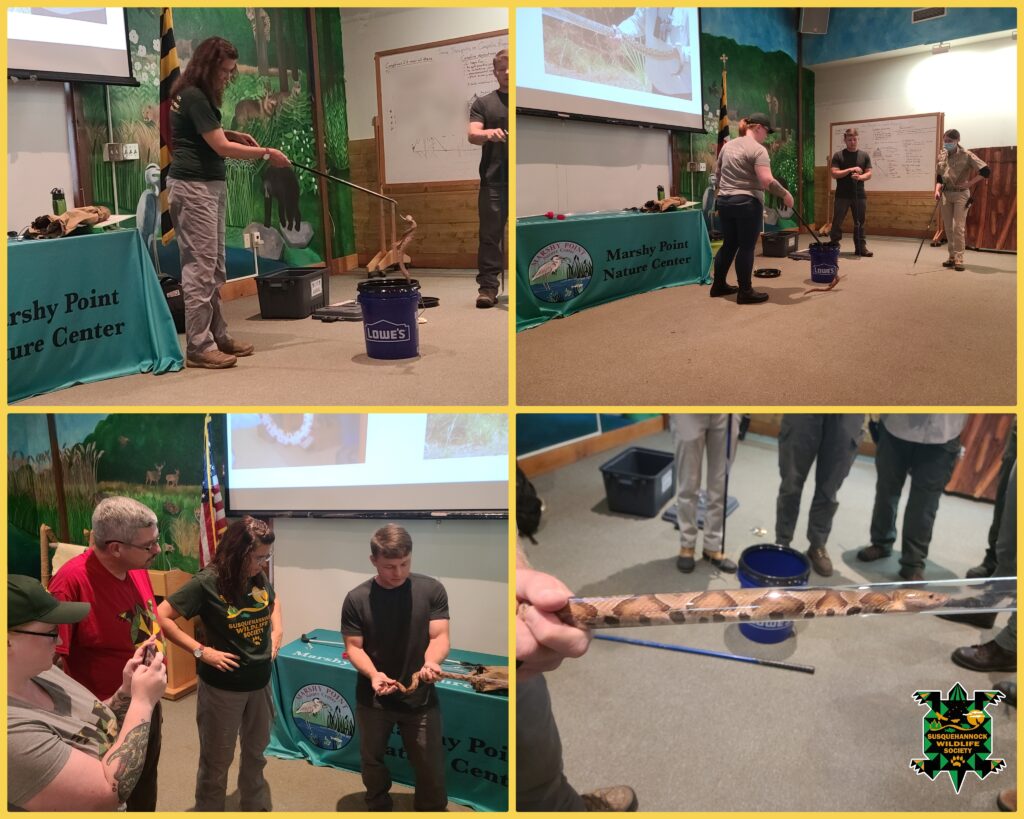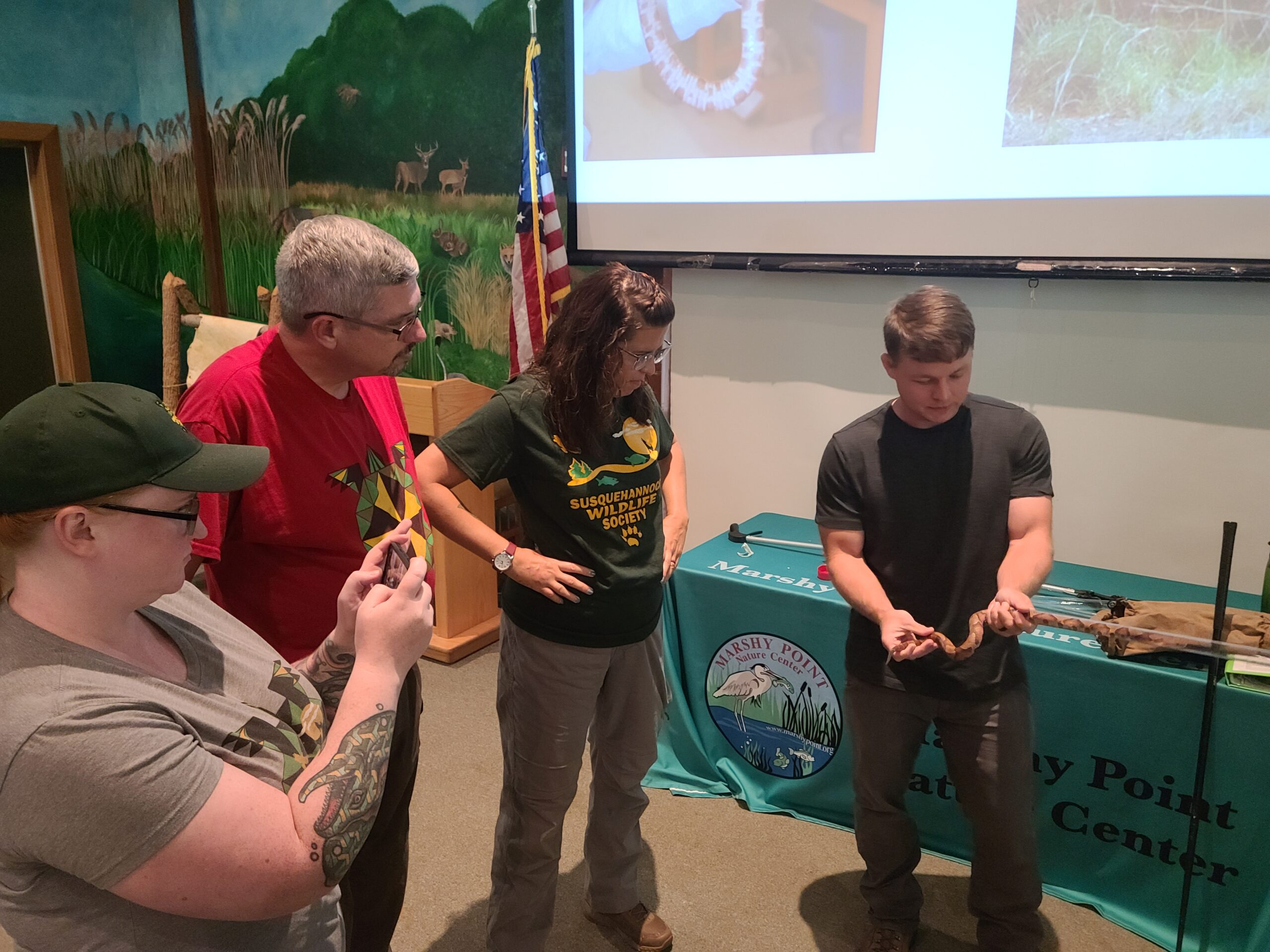Last week we were fortunate to partner with our friends at Marshy Point Nature Center to expand our venomous snake training to more members of our rescue and volunteer team. We advocate that venomous snakes are only typically dangerous if handled or intentionally / accidentally provoked to use a defensive strike. In most cases, other than being stepped on or accidentally grabbed, one can easily walk away from a snake once seen near a trail or lightly spray a water hose at a snake if it is found near a dwelling without ever getting close to it. Too often these snakes are killed (which is illegal in Maryland) when they could have been left alone or had a professional assess the situation and assist if needed. These and all snakes are incredibly important to our ecosystem and provide additional value in both medical research and controlling disease carrying rodents. Many snakes are also misidentified, something we are available to help with if you send us a message here online, via text or call our hotline. If you are not positive what species a snake is, treat it as if it is venomous and do not handle it.

Here in Harford County we have times where we have to directly encounter our only native local snake species with medically significant venom, the Eastern Copperhead. We have a captive born Copperhead in our permitted educational exhibit collection that we need to care for and while we leave healthy snake removals from homes up to the wildlife control companies, there are times where we have had to help with a rescue from erosion netting or a special relocation situation. The safety of our team and these important species are of great concern to us so we are always learning best practices to ensure we do the best we can, with the lowest risk possible. While our published research has proven that these snakes avoid striking in most cases, if you or someone you know has been bitten, please always call 911 and then also Maryland Poison Center 1-800-222-1222 for specialized assistance that can help advise caregivers on what to do and where to go for the best treatment.


